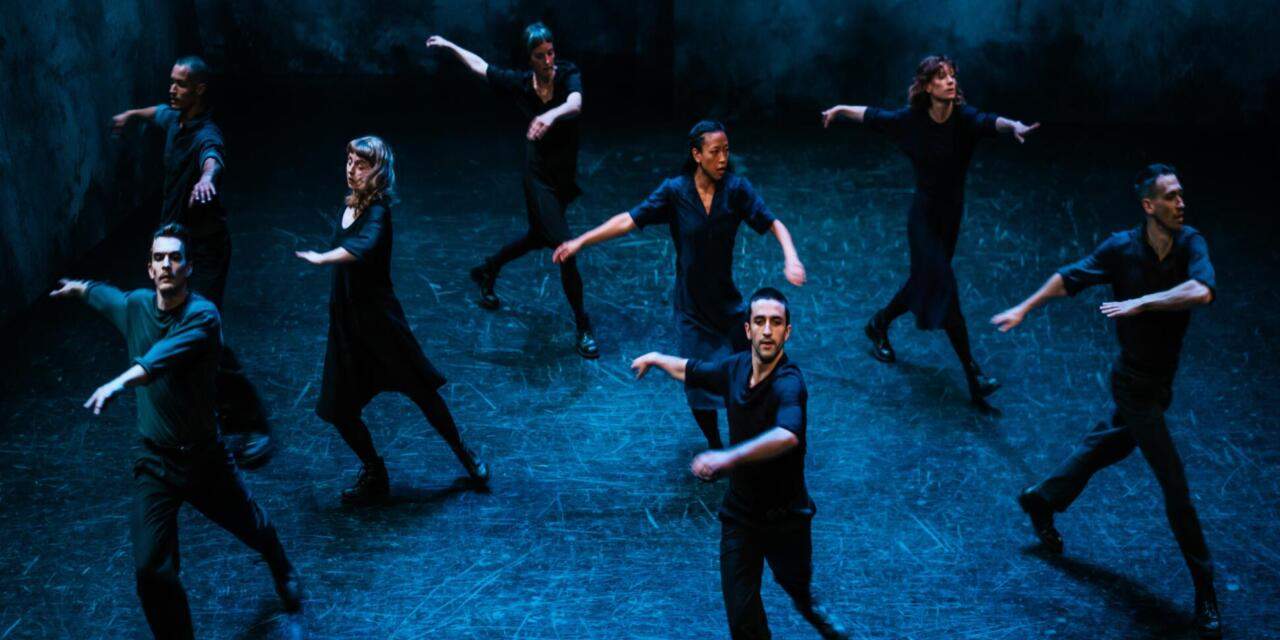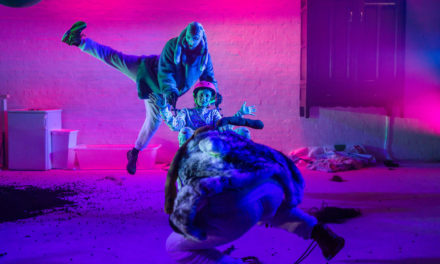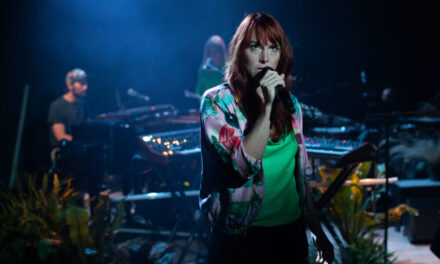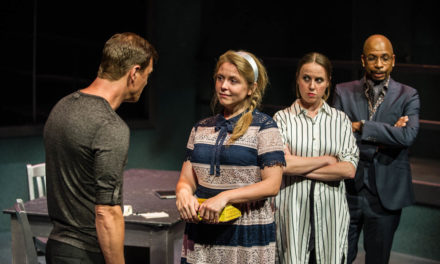Night, a faint and obscure shroud, creeps over and overtakes space. Sounds of footsteps clattering steadily, becoming closer, drawing attention and commanding focus.
The arrival of four women and four men, each wearing dark clothing, represents humans bearing the weight of injustice, pain, and love.
For the first time, Canadian choreographer Jean-Pierre Perreault created the dance performance Nuit, meaning night, in 1986. Nearly two decades after its debut, Nuit continues to captivate audiences, especially after being remounted by Toronto’s Compagnie de la Citadelle. This latest iteration of Nuit was showcased at the Fleck Dance Theatre during the Luminato Festival in Toronto from June 8th to 10th, 2023.
As an audience member, I experienced Nuit‘s stripped-down, unadorned approach to storytelling. The production delivered a raw and honest representation of humanity. The set’s minimalism allowed focus on the dance and the performers, who generated sound through their footsteps and vocalizations. This raw vision of humanity, with all its strengths and imperfections, held my attention steadfastly. The set, built of colossal cubes, expressed both confinement and loss. It called to my mind the Jewish ghetto in Terezin, Czech Republic, where countless individuals were sent to extermination camps. I’ve been to this ghetto twice before, and each time I couldn’t help but feel a glimpse of the hardships the people trapped there endured.
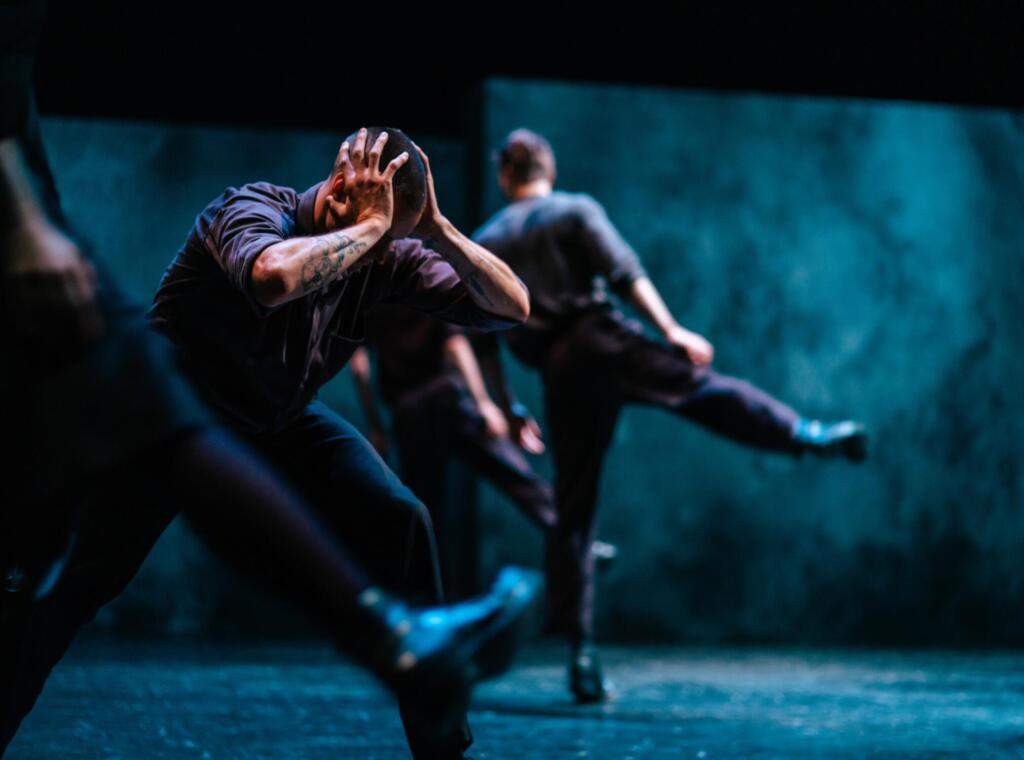
Nuit by Jean-Pierre Perreault. Photo by Elle Marie.
The performers’ expressions of desolation powerfully evoked visions of the Nazi era for me, trapping innocent people in the grips of oppressor power. The dancers, arms extended with bent forearms, embodied those trapped in the rigors of their rulers’ authority or swayed by the influence of their time’s ideology.
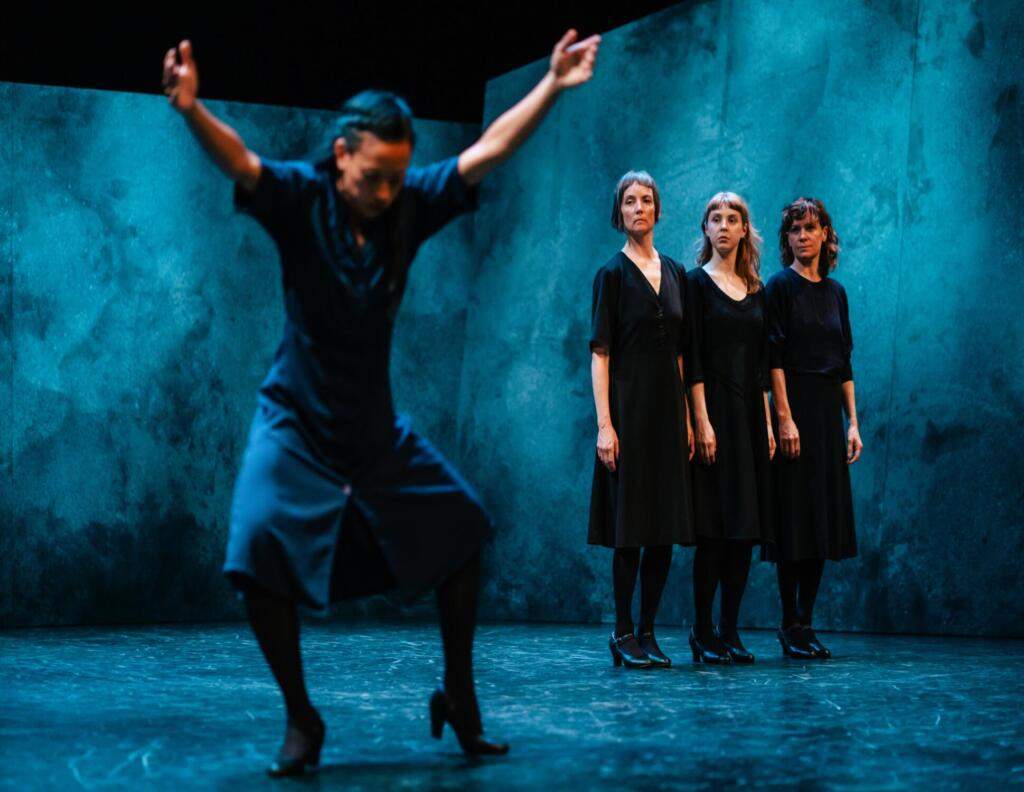
Nuit by Jean-Pierre Perreault. Photo by Elle Marie.
Throughout the performance, the expressive movements of the dancers illustrated journeys of collective loss and gain and individual sympathy and caring. It represented human vulnerability and survival instincts in confronting life’s adversities. Nuit invited the audience to pause, reflect, meditate, and contemplate their lives and priorities. The performers’ movements highlighted the value of fundamental qualities like respect and love, reminding us of what matters most in our lives.
This post was written by the author in their personal capacity.The opinions expressed in this article are the author’s own and do not reflect the view of The Theatre Times, their staff or collaborators.
This post was written by Azadeh Kangarani.
The views expressed here belong to the author and do not necessarily reflect our views and opinions.

